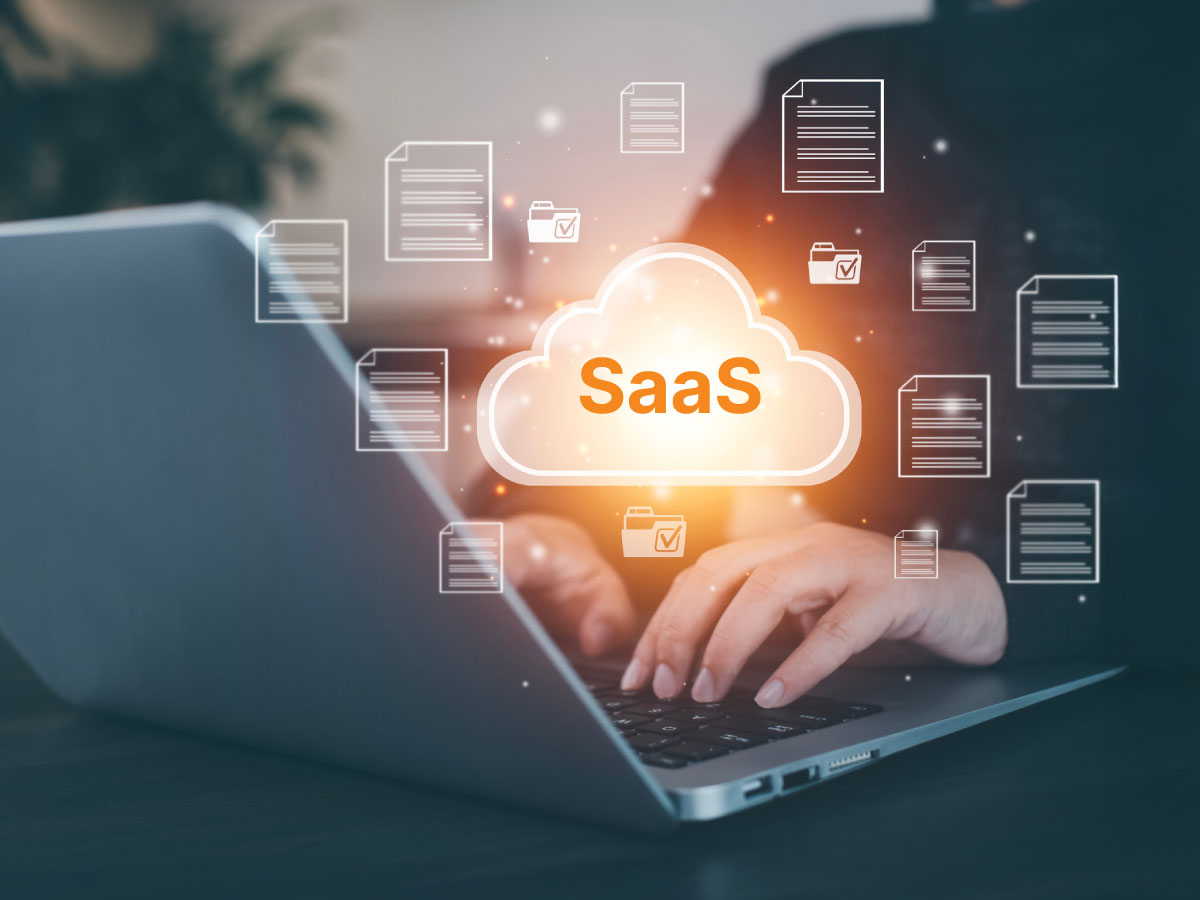Contact information.
-
Address"Ekzarh Yosif" street, 31, 1000 Sofia, Bulgaria
-
Phone:+359 2 980 95 99
-
Websitewww.balkanservices.com

SaaS – “software as a service” – is one of the leading models for implementing new technologies in business today. Although the concept is not necessarily related to a cloud environment, in reality, most SaaS solutions are delivered through cloud architecture. This, along with flexibility and easy access, is the basis for its widespread use and popularity among companies.
SaaS (Software as a Service) is a model for delivering software solutions where applications are provided by a vendor and accessed online. This allows users to work with applications on a subscription basis, without the need for their own infrastructure, installation, or maintenance.
Since the COVID-19 pandemic, the adoption of SaaS solutions has grown globally as companies have quickly adapted to remote working. However, many are still hesitant to move from on-premises systems to cloud solutions/SaaS, mainly due to uncertainty about the benefits and risks.
As with any new technology, there are myths and misconceptions. Here are five of them—and the truth behind each one.
When comparing SaaS and on-premises solutions, it is often claimed that making a significant initial investment in your own system is more economical in the long run. However, this argument overlooks an important fact: on-premises software continues to generate costs, but the company, not the provider, entirely bears these.
To maintain an on-premises solution, you need:
Read more: Sunotec consolidates its financial statements using Lucanet
This misconception is often due to a lack of knowledge about SaaS products. In fact, the cloud environment allows for remote configuration, which is significantly easier than implementing a local solution. Support is also simplified—all responsibility lies with the service provider, who has extensive experience and in-depth knowledge of the system.
This allows them to respond quickly and effectively to any issues that arise, saving you time and effort.
On-premise solutions are often presented as more flexible in terms of customization, but that doesn’t mean that cloud technologies cannot be adapted to your needs.
Learn more: ERP systems and EURO – how do you prepare them? (UPDATED)
For example, Lucanet — the financial planning, consolidation, and reporting platform—can be configured to integrate directly with your existing ERP or accounting system. Thanks to its cloud architecture and “by financial professionals for financial professionals” philosophy, Lucanet’s interface allows for easy configuration by end users without the need for IT intervention. This makes it more accessible, convenient, and efficient in everyday work.
Cybersecurity is critically important, especially when working with financial data. Due to remote access, many people believe that SaaS solutions are more vulnerable – but the reality is different.
Modern cloud systems implement multi-layered security measures, including encryption, access control, and continuous monitoring. Software manufacturers have entire teams of highly skilled professionals who focus solely on data security and are constantly improving their defences.
As with any new technology, it is difficult to predict its long-term impact at first. Many are wary of investing time and money in a solution that may become obsolete.
In the case of SaaS, however, the reality is apparent—the high level of adoption across various industries shows that this model is here to stay. Leading companies have already embraced it and are actively developing their cloud solutions, making SaaS the standard for modern business.
Our team is here to listen carefully and offer the right solution for you.

Myths about SaaS often create unnecessary hesitation, but the reality is different – cloud solutions are secure, flexible, affordable, and easy to implement. They eliminate heavy upfront investments, offer faster support, and allow for customisation that works in sync with your business goals.
If you are looking for a modern cloud-based SaaS solution for finance, discover CFO Solution by LucaNet – an integrated platform designed for the needs of finance teams. In a single environment, you will find solutions for Financial Planning and Consolidation, xP&A (operational planning), Disclosure Management, XBRL Portal, XBRL Tagger, and ESG Reporting. The platform offers unmatched advantages that transform the way your finance department works: more efficient processes, more reliable data, and more informed decision-making.
You may be interested in reading: What is cloud technology – characteristics, purpose, benefits
*Source: Official website of Lucanet
At Balkan Services, we have expert knowledge of business, technology, and legislation, and we are fluent in all three languages. We will listen carefully to you and advise you on choosing the right business system for your needs.
Balkan Services has been implementing software solutions for businesses since 2006 and has completed more than 750 projects for over 400 clients. We follow a proven implementation methodology with clear steps and know-how for best practices.